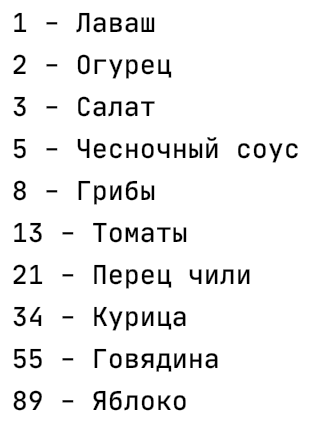Like in the past
I wrote an article on Recursive Zeckendorff Algorithm: post
Sample code
def le_fib(limit, fib)
theoretical = fib[fib.count - 1] + fib[fib.count - 2]
return fib.last if theoretical > limit
fib << theoretical
le_fib(limit, fib)
end
def main(target,result)
temporary = le_fib(target, [1,1])
result << temporary
return result if target - temporary <= 0
main(target - temporary, result)
end
pp main(gets.to_i,[])
Le_fib function - recursively searches for a Fibonacci series with a limit, so that the next number is not greater than the input target number . It is important here that we are not interested in the entire Fibonacci series, only its end is important to us.
The main function - recursively searches for an array whose numbers are Fibonacci numbers, and which would give us an input number in total.
Although in truth, the comments suggested a more elegant solution:
One cycle and business
n, F = 100, [1, 2]
while F[-1] < n do
F << F[-2] + F[-1]
end
F.reverse.each do |f|
if f <= n
n -= f
print f
print '+' if n > 0
end
end
In practice, I will use the second algorithm as it is less overloaded with unnecessary actions.
Problem statement where we will "push this algorithm"
There is a certain set of products, relatively speaking:
[Chicken, tomatoes, lavash, mushrooms].
These products have both cost and end-user value.
For example, the gradation can be done as follows
[chicken> tomatoes> mushrooms> lavash] .
, 1 "Low cost", 1 "High cost" .
().
( Ruby) , .
, .
x y .
-
![[1,100] [1,100]](https://habrastorage.org/getpro/habr/upload_files/3b9/40a/2ab/3b940a2ab56fddb123e85f83a32e30e0.png)
[1,100] ![[1,1000] [1,1000]](https://habrastorage.org/getpro/habr/upload_files/4cc/50c/f95/4cc50cf95a874b03c0251d005011dbb1.png)
[1,1000] Y - .
- , .
. Y
![[1,143] [1,143]](https://habrastorage.org/getpro/habr/upload_files/643/ca3/095/643ca3095959f3d45334b59c2b60e377.png)
[1,143] 1 89. , "Middle cost" .
3 x = 1 y = 143.
, :
- ( )
Collector, Hash ( -> , -> )
, autoloader , .
, ,
@fib = [1,2,3,5,8,13,21,34,55,89]
def collect_the_items
food_hash = Hash.new
(0..9).each do |iterator|
food_hash[@fib[iterator]] = FOOD.first[iterator]
end
puts food_hash.map{|key,value| "#{key} - #{value}"}
end

, :
def get_sequence(limit)
result = [] n, fib = limit, [1, 2]
while fib[-1] < n do
fib << fib[-2] + fib[-1] end
fib.reverse.each do |f| if f <= n
n -= f
result << f
end
end
result
end
- .
def generate_food
food_array = Collector.collect_the_items
food = []
rarity = rand(1..143)
get_sequence(rarity).each do |key|
food << food_array[key]
end
food
end
, 6 , .
. - .


:
Low cost : ?
Mid cost : ?
High cost : ?
Applying the Zeckendorff representation algorithm completely satisfies me. That is, it performs the task assigned to it.
One of the first comments under the article on which this practical application is based, just asked me the question: "but really, where can this be applied?" As you can see, this algorithm can be used for such tasks.
And I'm not saying that this is the only correct option for compiling a list of products for my bot, but it really is quite capable and works.